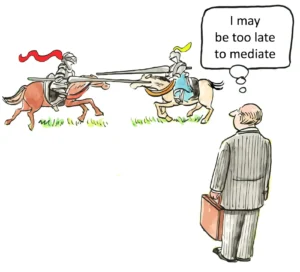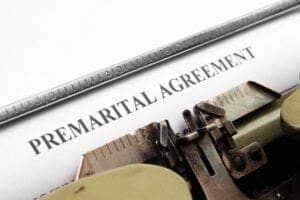How Much Does a Personal Injury Lawyer Cost? No Win No Fee Explained
Understanding Personal Injury Lawyer Costs
When seeking legal representation after an injury, one of the first questions that comes to mind is how much does a personal injury lawyer cost. The financial aspect of hiring legal counsel can seem daunting, especially when you’re already dealing with medical bills and possibly lost wages due to your injury. Fortunately, most personal injury attorneys operate on a contingency fee basis, commonly known as “no win, no fee.” This arrangement makes legal representation accessible to injury victims regardless of their financial situation, as payment is contingent upon securing compensation.
The no win, no fee structure fundamentally changes how injured individuals can access justice. Instead of requiring upfront payment or hourly billing, attorneys agree to accept a percentage of the settlement or court award. If they fail to recover compensation for you, they receive no payment for their services. This system aligns the interests of both client and attorney, as both parties benefit from maximizing the recovery amount.
As we move into 2025, the landscape of personal injury law continues to evolve, with changes in fee structures, technological advancements, and shifting legal precedents. Understanding these developments can help you make informed decisions about your legal representation and set realistic expectations about the costs involved in pursuing a personal injury claim.
How Contingency Fees Work in Personal Injury Cases
The contingency fee system forms the backbone of most personal injury attorney payment arrangements. Under this model, lawyers only collect payment if they successfully recover compensation for their clients, either through settlement negotiations or court verdicts. This approach removes the financial barrier that might otherwise prevent injured individuals from seeking legal representation.
Standard contingency fees typically range from 33% to 40% of the final recovery amount. The specific percentage often depends on several factors, including the complexity of the case, the attorney’s experience level, and whether the case settles before filing a lawsuit or proceeds to trial. Many attorneys use a tiered fee structure where the percentage increases as the case progresses through different stages of litigation. For example, a lawyer might charge 33% if the case settles before filing a lawsuit, 38% if it settles after filing but before trial, and 40% if the case goes to trial.
The contingency fee agreement should be clearly outlined in writing at the beginning of the attorney-client relationship. This document, often called a retainer agreement, specifies the exact percentage the attorney will receive, how case expenses will be handled, and what happens if there is no recovery. Before signing any agreement, clients should carefully review these terms and ask questions about anything that isn’t clear. Transparency about fees helps establish trust and prevents misunderstandings later in the process.
Additional Costs Beyond Attorney Fees
While the contingency fee covers the attorney’s professional services, personal injury cases typically involve various additional expenses that must be considered. These costs are separate from the lawyer’s fee and are necessary to properly investigate and present your claim.
Case expenses commonly include court filing fees, which can range from $100 to $400 depending on the jurisdiction. Other significant costs include obtaining medical records and police reports, hiring expert witnesses, paying for depositions (including court reporter fees and transcripts), and covering administrative expenses like postage, copying, and travel. In complex cases involving serious injuries, expert witness fees can be substantial, with medical experts often charging several hundred dollars per hour for their time reviewing records, preparing reports, and testifying.
Most personal injury firms advance these costs on behalf of their clients, recovering them from the settlement or verdict at the conclusion of the case. However, policies regarding case expenses vary between law firms. Some attorneys deduct these costs from the client’s portion of the recovery after calculating their contingency fee, while others deduct expenses from the total recovery before calculating their percentage fee. The difference can significantly impact how much money ends up in your pocket, so it’s important to understand how your attorney handles case expenses before signing a representation agreement.
Benefits of the No Win No Fee System
The no win no fee arrangement offers several significant advantages for individuals seeking compensation after an injury. Perhaps the most important benefit is that it provides access to justice for everyone, regardless of their financial resources. Without this system, many injured people would be unable to afford legal representation, effectively denying them the ability to pursue rightful compensation.
This payment structure also creates a powerful alignment of interests between attorney and client. Since the lawyer only gets paid if they win, they have a strong incentive to maximize your recovery. This contrasts sharply with hourly billing arrangements, where attorneys get paid regardless of the outcome and may have financial incentives to prolong cases. Under a contingency arrangement, attorneys are motivated to work efficiently and effectively to secure the best possible result.
The no win no fee system also shifts the financial risk from the client to the attorney. Personal injury cases can be complex and unpredictable, with no guaranteed outcomes. By working on contingency, lawyers assume the risk of investing their time and resources in cases that might ultimately be unsuccessful. This risk-sharing arrangement means that attorneys carefully evaluate cases before accepting them, providing clients with an honest assessment of their chances of success rather than taking on cases with little merit simply to collect fees.
Factors That Influence Personal Injury Lawyer Fees
Several key factors can influence the percentage a personal injury attorney charges for their services. Understanding these elements can help you evaluate fee proposals and negotiate terms that fairly reflect your specific situation.
Case complexity significantly impacts fee structures. More complicated cases require additional attorney time, resources, and expertise. Cases involving catastrophic injuries, multiple defendants, disputed liability, or complex legal issues typically command higher contingency percentages due to the increased work and risk involved. Conversely, straightforward cases with clear liability and documented damages might warrant lower percentages.
The attorney’s experience and track record also play major roles in determining fees. Highly experienced attorneys with proven success records often charge higher percentages than less experienced lawyers. While this might seem counterintuitive at first, experienced attorneys often justify higher fees through their ability to secure larger settlements and verdicts, potentially resulting in better net outcomes for clients despite the higher percentage.
Geographic location influences fee structures as well. Personal injury attorneys in major metropolitan areas typically charge higher percentages than those in rural areas, reflecting differences in operating costs, competition, and local market standards. Additionally, some states have laws that cap contingency fees in certain types of cases, particularly medical malpractice claims, which can limit the percentage attorneys are permitted to charge.
Negotiating Fees With Your Personal Injury Lawyer
Many potential clients don’t realize that attorney fees are often negotiable, particularly in personal injury cases. While standard contingency percentages exist, there is room for discussion based on the specifics of your case and your personal circumstances.
When approaching fee negotiations, timing matters. The initial consultation provides an ideal opportunity to discuss fees before committing to representation. Come prepared with questions about the proposed fee structure, how case expenses will be handled, and whether the percentage might be adjusted based on your specific situation. If you’re speaking with multiple attorneys, understanding different fee proposals can provide leverage in negotiations.
Several factors might justify requesting a reduced contingency percentage. Cases with clear liability, substantial documented damages, and a high likelihood of settlement may warrant lower fees due to reduced risk and work for the attorney. Similarly, cases expected to result in large settlements might justify lower percentages, as the attorney will still receive significant compensation even at a reduced rate. Some attorneys are willing to consider tiered or sliding scale percentages that decrease as the settlement amount increases.
Remember that the lowest fee doesn’t necessarily represent the best value. An experienced attorney charging a higher percentage might ultimately secure a significantly larger settlement than a less experienced lawyer charging a lower rate. Focus on the estimated net recovery rather than the percentage alone. Additionally, consider the attorney’s willingness to advance case expenses, their approach to client communication, and their overall fit with your needs and expectations.
Understanding Fee Agreements: What to Look For
Before signing a fee agreement with a personal injury attorney, it’s essential to thoroughly understand all terms and conditions. These legally binding contracts establish the financial relationship between you and your lawyer, so clarity is paramount.
A comprehensive fee agreement should clearly state the contingency percentage and specify whether this rate changes depending on the stage of litigation. It should explain how case expenses will be handled, including whether costs are advanced by the firm or paid by the client as they arise, and whether expenses are deducted before or after calculating the attorney’s percentage. The agreement should also address what happens if you terminate the representation or switch attorneys mid-case.
Pay particular attention to clauses regarding unsuccessful outcomes. While the basic premise of contingency fees is “no win, no fee,” some agreements may still hold clients responsible for case expenses even if there is no recovery. Understanding your potential financial exposure in worst-case scenarios is crucial before proceeding.
Don’t hesitate to ask for clarification on any terms you don’t understand. Reputable attorneys welcome questions about their fee structures and will take time to ensure you’re comfortable with the arrangement. If an attorney seems reluctant to explain their fees or pressures you to sign without full understanding, consider this a potential red flag. The attorney-client relationship should begin with transparency and mutual understanding, particularly regarding financial matters.
Comparing Different Fee Structures in Legal Services
While contingency fees dominate personal injury practice, understanding alternative fee structures can provide valuable context for evaluating your options. Different payment models serve different legal needs and come with their own advantages and limitations.
Hourly billing, the traditional approach in many legal fields, involves paying for the attorney’s time at a set rate, typically ranging from $150 to $500 per hour depending on experience and location. This model works well for cases where outcomes are unpredictable or where legal services don’t involve monetary recovery. However, hourly billing creates uncertainty about total costs and may disincentivize efficiency.
Flat fee arrangements provide cost certainty by charging a single predetermined amount for specific legal services. This approach works well for routine matters with predictable work requirements, such as drafting a simple will or handling an uncontested divorce. Personal injury cases rarely use flat fees due to their unpredictable nature and variable workloads.
Hybrid fee structures combine elements of different payment models. For example, some personal injury attorneys might charge a reduced hourly rate plus a smaller contingency percentage. This approach distributes risk between attorney and client while providing the lawyer with some compensation regardless of outcome. These arrangements are relatively uncommon but might be appropriate in unusual cases.
Understanding these alternatives highlights the advantages of contingency fees for personal injury clients. Unlike other fee structures, contingency arrangements provide access to legal services without upfront costs, align attorney incentives with client goals, and ensure that legal fees remain proportional to the value delivered.
The Ethics of Personal Injury Lawyer Fees
Legal representation costs in personal injury cases are subject to ethical rules and regulations designed to protect clients and ensure fair practices. These guidelines vary somewhat by jurisdiction but generally establish boundaries for reasonable contingency percentages and required disclosures.
State bar associations and ethics committees provide oversight of attorney fee practices. Most jurisdictions require contingency fee agreements to be in writing and clearly explain the percentage, how costs are handled, and the client’s rights. Some states impose caps on contingency percentages for certain types of cases, particularly medical malpractice claims, where fees might be limited to 30% or less of the recovery.
Ethical rules also address potential conflicts in fee arrangements. For example, attorneys generally cannot charge contingency fees in criminal defense or certain family law matters where such arrangements might compromise professional judgment or public policy interests. Additionally, lawyers must ensure their fees remain “reasonable” based on factors including the time and labor required, the difficulty of the questions involved, and the skill needed to perform the legal service properly.
Clients who believe their attorney has charged excessive fees have recourse through state bar grievance procedures. These processes allow for investigation of potentially unethical fee practices and can result in discipline for attorneys who violate professional standards. However, disputes over fees are often better resolved through direct communication or fee arbitration programs offered by many bar associations.
Recent Trends in Personal Injury Attorney Fees
As we navigate through 2025, several notable trends are emerging in how personal injury lawyers structure their fees and manage client relationships. These developments reflect broader changes in the legal industry and consumer expectations.
Technology is transforming fee arrangements through greater transparency and efficiency. Many firms now use sophisticated case management software that provides clients with real-time updates on case progress and expenses. This transparency helps clients understand the work being performed and the value provided. Additionally, automation of routine tasks is reducing overhead costs for many firms, potentially allowing for more competitive fee structures.
Competition in the personal injury market has intensified, partly due to widespread advertising and the ease of comparing services online. This competitive environment has led some firms to offer reduced contingency percentages as a marketing strategy to attract clients. However, this trend varies significantly by region and practice area, with specialized or high-demand attorneys still commanding premium rates.
Client expectations continue to evolve, with increasing demand for alternative fee arrangements and greater cost predictability. Some innovative firms are responding with hybrid models or sliding scale contingency fees that decrease as settlement amounts increase. Others offer “no fee unless you collect more than the insurance company’s initial offer,” guaranteeing that clients benefit from legal representation.
Regulatory changes in some jurisdictions are also influencing fee practices. Some states have implemented or considered reforms that would cap contingency percentages or require greater disclosure of fee arrangements. These regulatory trends reflect ongoing debates about access to justice and the appropriate balance between attorney compensation and client recovery.
Questions to Ask About Fees During Your Free Consultation
Most personal injury attorneys offer free initial consultations, providing an excellent opportunity to discuss fees and financial arrangements before committing to representation. Asking the right questions during this meeting can help you understand potential costs and evaluate whether the attorney’s approach aligns with your expectations.
Start by confirming the basic contingency percentage and whether it varies based on the stage of litigation or settlement amount. Ask specifically about how the percentage might change if your case goes to trial or requires an appeal. Understanding these potential variations helps you assess the financial implications of different case outcomes and litigation strategies.
Inquire about case expenses and how they’re handled. Key questions include whether the firm advances costs or requires you to pay them as they arise, which specific expenses you might be responsible for, and whether you would owe anything for expenses if your case is unsuccessful. Also ask how expenses are deducted—whether from the total recovery before calculating the attorney’s percentage or from your portion after the attorney takes their fee.
Discuss potential outcomes and how they might affect fees. Ask the attorney to provide scenarios based on different settlement amounts, showing how much you would receive after fees and expenses in each case. This exercise can help you understand the practical impact of the fee arrangement and set realistic expectations about your potential recovery.
Finally, ask about the attorney’s willingness to negotiate fees. While not all attorneys adjust their standard rates, many are open to discussion based on case specifics. Understanding whether there’s flexibility in the fee structure gives you information needed for potential negotiation.
The Value Proposition: What You’re Paying For
When evaluating the cost of a personal injury lawyer, it’s important to understand the comprehensive services and expertise included in the contingency fee. This perspective helps frame fees not simply as an expense but as an investment in maximizing your recovery.
Experienced attorneys bring specialized knowledge of personal injury law, insurance practices, and negotiation strategies that significantly impact case outcomes. They understand how to properly value claims, accounting not just for current medical expenses but also for future treatment needs, lost earning capacity, and non-economic damages like pain and suffering. This expertise often results in settlements substantially higher than what unrepresented claimants typically receive, even after accounting for attorney fees.
Legal representation provides critical leverage in negotiations with insurance companies. Insurers know that represented claimants have the ability to file lawsuits if reasonable settlements aren’t offered, whereas unrepresented individuals rarely have this practical option. This leverage frequently translates to more serious settlement offers and faster resolutions.
Personal injury attorneys also provide valuable case management services, handling all aspects of claims from investigation through resolution. They gather and preserve evidence, work with medical providers to document injuries, manage communications with insurance companies, and prepare cases for potential litigation. This comprehensive approach allows clients to focus on recovery rather than navigating complex legal and insurance systems.
Perhaps most importantly, contingency fees align attorney incentives with client goals. Since payment depends on successful outcomes, attorneys are motivated to maximize recovery rather than bill additional hours. This alignment creates a true partnership between attorney and client, with shared interest in achieving the best possible result.
Common Misconceptions About Personal Injury Lawyer Costs
Several persistent myths about legal fees in personal injury cases can lead to confusion and poor decision-making. Addressing these misconceptions helps potential clients make more informed choices about legal representation.
One common misunderstanding is that hiring an attorney will result in less money for the client. While attorneys do receive a percentage of the recovery, studies consistently show that represented claimants typically receive larger net settlements (after fees) than unrepresented individuals. This occurs because attorneys generally secure significantly higher gross settlements that more than offset their fees.
Another misconception is that all personal injury attorneys charge the same fees, making comparison shopping unnecessary. In reality, contingency percentages can vary considerably between firms, as can policies regarding case expenses and fee adjustments for quick settlements. These differences can substantially impact your net recovery, making it worthwhile to compare fee structures among qualified attorneys.
Some potential clients believe they can negotiate lower fees after their case is successfully resolved. However, contingency percentages are established in the initial representation agreement and rarely change after the fact. Negotiation needs to occur before signing the agreement, when you have maximum leverage and options.
Finally, many people incorrectly assume that “no win, no fee” means they will never have to pay anything if their case is unsuccessful. While attorney fees are indeed contingent on recovery, some agreements still hold clients responsible for case expenses even without a favorable outcome. Understanding your potential financial exposure in worst-case scenarios is essential before proceeding with representation.
How to Evaluate if a Lawyer’s Fee is Fair
Determining whether a contingency fee is reasonable requires considering multiple factors beyond simply comparing percentages. This evaluation should account for the specific circumstances of your case and the value the attorney brings to the table.
Start by researching standard fee ranges in your geographic area and for your type of case. While 33% to 40% represents the typical range, local norms may vary. State bar associations sometimes publish information about customary fees, and consulting multiple attorneys can provide perspective on market rates.
Consider the complexity and risk associated with your specific case. Cases involving disputed liability, serious injuries, multiple parties, or complex legal issues justify higher contingency percentages due to the increased work and uncertainty involved. Conversely, straightforward cases with clear liability and documented damages might warrant lower percentages.
Evaluate the attorney’s experience, reputation, and track record with similar cases. More experienced attorneys with proven success records may command higher percentages, but they may also secure larger settlements that result in better net outcomes despite the higher fee. Consider whether the attorney’s specific expertise and resources justify their proposed fee structure.
Finally, assess the comprehensive value proposition, including the attorney’s approach to case expenses, willingness to take cases to trial if necessary, and quality of client service. Some attorneys offer lower contingency percentages but nickel-and-dime clients on expenses or pressure them to accept inadequate settlements. A slightly higher percentage from an attorney who truly maximizes your recovery and provides excellent service may represent better value.
The Impact of Case Complexity on Personal Injury Lawyer Fees
The complexity of a personal injury case significantly influences appropriate attorney fees, with more challenging cases typically warranting higher contingency percentages. Understanding the factors that contribute to case complexity helps explain fee variations and sets appropriate expectations.
Cases involving catastrophic injuries or wrongful death claims generally require more extensive work and expertise. These matters often involve complex medical evidence, life care planning, economic analysis of future losses, and higher stakes that justify increased attorney investment and risk. Similarly, cases with disputed liability or multiple potentially responsible parties require additional investigation, expert testimony, and legal research to establish fault.
Medical malpractice and product liability claims represent particularly complex categories that often command higher contingency percentages. These cases typically require specialized knowledge, expensive expert witnesses, and opposition from well-funded defendants with experienced legal teams. The combination of technical complexity and formidable opposition justifies higher contingency percentages, often at the upper end of the standard range or beyond.
Cases requiring extensive litigation also warrant higher fees than those likely to settle pre-suit. When attorneys must file lawsuits, conduct discovery, take depositions, engage in motion practice, and prepare for trial, the workload increases dramatically compared to cases resolved through negotiation alone. Many fee agreements reflect this reality through tiered percentages that increase if litigation becomes necessary.
Understanding these complexity factors helps explain why attorneys might propose different fee structures for different types of cases. Rather than reflecting arbitrary pricing, these variations typically correspond to meaningful differences in the work required and the risk assumed by the attorney.
Technological Advancements and Their Effect on Legal Fees
Emerging technologies are reshaping how personal injury lawyers operate, with potential implications for fee structures and client service. These innovations are creating both efficiencies and new challenges that influence the cost and delivery of legal services.
Case management software and digital evidence systems are streamlining many aspects of personal injury practice. Electronic filing, virtual client meetings, and digital document management reduce administrative overhead and improve efficiency. These technologies enable some firms to handle larger caseloads with fewer support staff, potentially allowing for more competitive fee structures while maintaining profitability.
Artificial intelligence tools are beginning to transform legal research and document review, tasks that traditionally required substantial attorney time. AI-powered platforms can now analyze case law, identify relevant precedents, and review medical records far faster than human attorneys. As these technologies mature, they may reduce the labor intensity of case preparation, potentially influencing fee structures.
Virtual court proceedings, which gained traction during the pandemic, have become a permanent feature in many jurisdictions. These remote options reduce travel time and associated expenses, potentially lowering case costs. However, they also create new technical requirements and challenges that firms must navigate.
While technology creates efficiencies, it also requires significant investment. Law firms must purchase software, train staff, maintain cybersecurity measures, and regularly upgrade systems. These investments represent substantial overhead costs that must be recouped through fees. Additionally, the most sophisticated legal technology tools remain expensive, giving larger firms potential advantages in efficiency and case analysis that smaller practices may struggle to match.
The Future of Personal Injury Lawyer Compensation
Looking beyond 2025, several emerging trends may reshape how personal injury attorneys structure their compensation and interact with clients. These developments reflect broader changes in the legal industry, consumer expectations, and regulatory environments.
Alternative fee arrangements are gaining traction, with some innovative firms exploring models beyond traditional contingency percentages. These include sliding scale contingency fees that decrease as settlement amounts increase, hybrid models combining reduced hourly rates with smaller contingency percentages, and subscription-based legal services for organizational clients with recurring personal injury exposure. These innovative approaches aim to better align attorney compensation with value delivered while providing clients with more options and transparency.
Consumer-driven transparency is likely to reshape fee practices as clients increasingly demand clear information about costs and value. Online attorney reviews, fee comparison platforms, and greater public awareness of legal service options are empowering consumers to make more informed choices. This trend may pressure firms to provide more detailed fee information, clearer value propositions, and potentially more competitive rates in some market segments.
Regulatory changes may also influence future fee structures. Some jurisdictions are considering reforms that would cap contingency percentages, require more detailed fee disclosures, or establish new oversight mechanisms for attorney compensation. These potential changes reflect ongoing debates about balancing attorney compensation with client interests and broader access to justice concerns.
The consolidation of personal injury practices may also impact fee structures. Large, well-capitalized firms with sophisticated marketing operations and economies of scale are capturing growing market share in many regions. These firms can spread fixed costs across more cases and leverage technology investments more effectively, potentially allowing for more competitive fee structures while maintaining profitability.
Making an Informed Decision About Personal Injury Representation
When evaluating personal injury attorneys and their fee structures, taking a systematic approach helps ensure you make choices aligned with your priorities and circumstances. This decision-making process should consider both financial and non-financial factors that contribute to effective representation.
Begin by consulting multiple attorneys through free consultations to compare approaches, fee structures, and communication styles. These meetings provide valuable information about how different lawyers would handle your case and what they believe it might be worth. Pay attention to whether attorneys take time to answer your questions thoroughly and explain complex concepts in understandable terms.
Consider the attorney’s specific experience with cases similar to yours rather than just their years in practice. A lawyer who regularly handles your particular type of injury or accident scenario will likely navigate the specific challenges more effectively than someone with more general experience. Ask about recent cases similar to yours and the outcomes achieved.
Evaluate the firm’s resources and willingness to invest in your case. Personal injury litigation can require substantial upfront investment in expert witnesses, investigations, and case preparation. Firms with adequate resources can fully develop cases rather than settling quickly due to financial constraints. Ask about the firm’s approach to case expenses and their capacity to take cases to trial when necessary.
Trust your instincts about personal compatibility. The attorney-client relationship in personal injury cases often lasts months or years and involves sharing sensitive personal information. Feeling comfortable with your attorney’s communication style and approach is important for a productive working relationship. The most qualified attorney on paper may not be the right choice if communication styles clash significantly.
Maximizing Value from Your Legal Representation
Once you’ve selected an attorney, several strategies can help you maximize the value received from your legal representation while maintaining a productive attorney-client relationship. These approaches focus on effective communication, appropriate involvement, and realistic expectations.
Establish clear communication protocols at the beginning of the representation. Discuss how often you’ll receive case updates, who will be your primary contact at the firm, and the best methods for reaching your attorney with questions. Understanding these expectations helps prevent frustration and ensures you stay appropriately informed without unnecessary delays.
Provide thorough and honest information to your attorney from the start. Disclose all potentially relevant facts about your accident, injuries, and medical history, even details that seem unfavorable. Your attorney can address known challenges proactively, but surprises discovered by the opposition can significantly damage your case. Remember that attorney-client privilege protects your communications, allowing for complete candor.
Maintain organized records of all accident-related expenses and impacts. Keep detailed documentation of medical bills, prescription costs, transportation expenses to medical appointments, and any property damage. Track lost work time and how your injuries affect daily activities. This documentation helps your attorney calculate damages accurately and provide evidence supporting your claim.
Follow your attorney’s advice regarding medical treatment, communications with insurance companies, and social media use. These recommendations aim to protect your legal interests and prevent actions that might undermine your case. Particularly important is completing recommended medical treatment and following doctor’s orders, as treatment compliance significantly impacts case valuation.
Conclusion: Balancing Cost and Value in Personal Injury Representation
The cost of a personal injury lawyer represents an important consideration in pursuing compensation after an injury, but it should be evaluated within the broader context of value and outcomes. The contingency fee system has evolved specifically to provide access to quality legal representation regardless of financial resources, aligning attorney incentives with client goals.
When assessing fee arrangements, look beyond simple percentages to consider the comprehensive value proposition. This includes the attorney’s relevant experience, track record with similar cases, approach to case expenses, willingness to litigate when necessary, and quality of client service. A slightly higher percentage from an attorney who maximizes your recovery and provides excellent service often represents better value than a lower percentage from less qualified representation.
Remember that studies consistently show represented claimants typically receive larger net settlements (after fees) than unrepresented individuals. This occurs because attorneys generally secure significantly higher gross settlements that more than offset their fees, while also relieving clients of the stress and complexity of navigating claims alone.
The legal landscape continues to evolve, with technological advancements, changing consumer expectations, and potential regulatory reforms influencing how personal injury attorneys structure their services and fees. These developments may create new options and greater transparency for clients seeking representation after injuries.
Ultimately, the most valuable approach involves becoming an informed consumer of legal services—understanding fee structures, asking appropriate questions, comparing options, and selecting representation that aligns with your specific needs and priorities. This informed approach helps ensure you receive fair value for the legal services provided while maximizing your chances of appropriate compensation for your injuries.
Citations:
- https://www.hupy.com/library/what-to-expect-from-personal-injury-law-in-2025.cfm
- https://www.pandmllp.com/what-does-no-win-no-fee-really-mean/
- https://www.hornwright.com/blog/2025/march/how-much-does-a-personal-injury-lawyer-cost-/
- https://rtrlaw.com/personal-injury/what-is-a-no-win-no-fee-promise-in-personal-injury/
- https://sobolaw.com/personal-injury/how-contingency-fees-work/
- https://attorneybrianwhite.com/blog/what-percentage-do-lawyers-take-for-a-personal-injury-case/
- https://www.novianlaw.com/personal-injury-attorney-fees/
- https://getmejustice.com/blog/how-much-does-a-personal-injury-lawyer-charge/
- https://www.thehadilawfirm.com/top-personal-injury-trends-to-watch-in-2025/
- https://lorfinglaw.com/blog/no-win-no-fee/
- https://www.lgkg.com/what-is-no-win-no-fee-and-is-it-right-for-you/
- https://nixlaw.com/personal-injury-attorneys/cost/
- https://www.croninfried.com/blog/how-much-does-a-hawaii-personal-injury-lawyer-cost/
- https://www.nolo.com/legal-encyclopedia/what-are-costs-in-a-personal-injury-case.html
- https://hawaiinuilawyer.com/how-much-does-a-personal-injury-lawyer-cost-in-hawaii/
- https://www.lawyer-monthly.com/2024/11/demystifying-personal-injury-lawyer-costs-in-sacramento-what-you-need-to-know/
- https://saslawgroup.com/personal-injury/looking-forward-personal-injury-legal-trends-for-2024/
- https://mckaylawtx.com/are-personal-injury-lawyer-fees-really-free-in-2025/
- https://www.torhoermanlaw.com/legal-guides/personal-injury-lawsuit-guide/how-much-does-a-personal-injury-lawyer-cost/
- https://www.allegra-law.com/news/how-does-no-win-no-fee-work-with-lawyers/
- https://calljmb.com/blog/how-much-do-injury-lawyers-charge-2025-guide-for-memphis-tn/
- https://www.onthemap.com/blog/personal-injury-stats/
- https://thomasjhenrylaw.com/help-information/no-win-no-fee/
- https://www.consumershield.com/injuries-accidents/car-accidents/lawyer-fees
- https://www.superlawyers.com/resources/personal-injury-plaintiff/how-much-does-it-cost-to-hire-a-personal-injury-attorney/
- https://plg-pllc.com/about-us/zero-fee-guarantee/
- https://mcmahanlawfirm.com/what-does-no-win-no-fee-mean/
- https://kelnerlaw.com/news/how-does-no-win-no-fee-work/
- https://als-lawyers.com/news/how-does-no-win-no-fee-work-with-lawyers/
- https://www.krwlawyers.com/how-a-no-win-no-fee-agreement-works-in-personal-injury-cases/
- https://www.findlaw.com/legalblogs/personal-injury/what-is-a-contingency-fee/
- https://www.gammill.law/no-win-no-fee-explained-is-it-right-for-you/
- https://nvbar.org/wp-content/uploads/Sample%20Contingent%20Fee%20Agreement.pdf
- https://greenberglawpc.com/news/how-does-no-win-no-fee-work-with-lawyers/
- https://www.nolo.com/legal-encyclopedia/what-is-a-contingency-fee.html
- https://www.thompsons.law/support/how-to-make-a-personal-injury-claim/what-is-no-win-no-fee
- https://www.heslinlawfirm.com/video/the-trouble-with-legal-fee-agreements.cfm
- https://www.lawinfo.com/resources/personal-injury/types-of-legal-fees.html
- https://www.mesrianilaw.com/blog/how-much-does-a-personal-injury-lawyer-cost/
- https://www.avvo.com/legal-answers/is-it-typical-in-a-fee-agreement-for-a-personal-in-6007717.html
- https://www.quilia.com/articles/top-5-strategies-for-optimizing-costs-of-running-a-personal-injury-law-firm/
- https://www.alllaw.com/articles/nolo/personal-injury/lawyer-costs-case-expenses.html
- https://quintessamarketing.com/2023/08/10/personal-injury-lawyer-increase-the-value/
- https://cflblaw.com/blog/how-much-do-personal-injury-lawyers-cost/
- https://www.bbga.com/articles/pi-faq/personal-injury-lawyer-cost/
- https://demayolaw.com/faqs/how-to-increase-a-personal-injury-settlement/
- https://www.linkedin.com/pulse/how-much-do-legal-consultations-cost-personal-injury-qgwqe
- https://www.crowsonlaw.com/other-news/cost-of-taking-personal-injury-case-to-court/
- https://lawyerdon.com/personal-injury-lawyer-fees/
- https://www.hambleninjurylaw.com/post/preparing-for-2025-legal-trends-impacting-personal-injury-claims
- https://stpetelawgroup.com/why-you-should-only-work-with-a-no-win-no-fee-injury-attorney/
- https://www.torhoermanlaw.com/legal-guides/personal-injury-lawsuit-guide/what-is-a-contingency-fee-personal-injury-legal-fees-explained/
- https://www.law.cornell.edu/wex/contingency_fee
- https://www.spiroslaw.com/blog/contingency-fee-basis/
- https://www.alllaw.com/articles/nolo/personal-injury/negotiating-reduced-lawyer-fees.html













